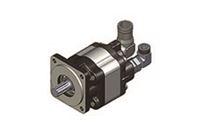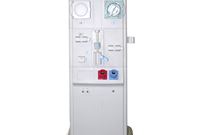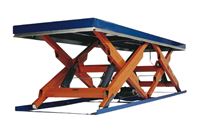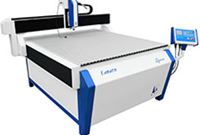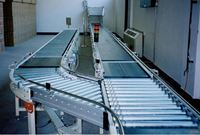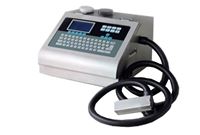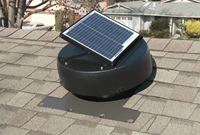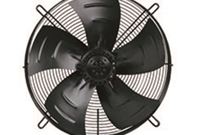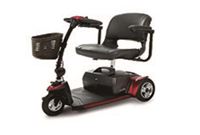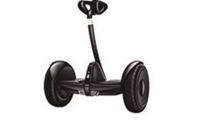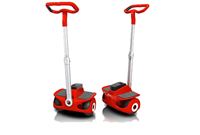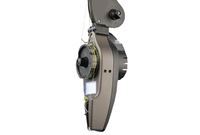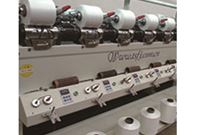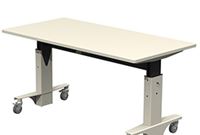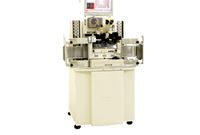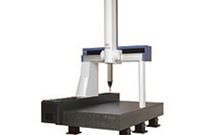- Q: How can we keep the motor temperature to a minimum?
- A:
Temperature rise can be minimized by:
1. Keeping the ambient temperature as low as possible.
2. Circulating air around the motor.
3. Making sure the motor is not insulated.
4. Mounting the motor to a good heatsink.
Additionally, selecting a more powerful motor should decrease the temperature rise if it is an important consideration.
- Q: Is there an optimum load to motor inertia ratio? Do I need to match the inertia ratios like my stepper systems?
- A:
The load to motor inertia ratios of a servo system do not need to be matched. If a system is matched 1:1, it would take half of the power to move the motor alone. The advantage of keeping an inertia ratio lower is the ability of the system to reject disturbances, but a system with a higher ratio of load to motor has a higher inherent bandwidth given the same load. This is advantageous for systems requiring quick response. You cannot, however go too high without some consequences. Dynamics are the most important part; so coupling of the motor to the load is critical. The higher the ratio, the stiffer the coupling must be. It is much easier to tune a system with perhaps a 4:1 load to motor inertia ratio then a system with a 20:1 given a stiff coupling and the same load.
- Q: Should I use brushless motor vs. brush motor in my application?
- A:
It should be important to decide when it comes to determining which motor you will need for whatever application or project you are realizing, and your choice will depend on a variety of factors. Some major issues you will need to consider are target cost, amount of power you will need and how long you need it to last. If you have a project or application where you will only need a motor for short term use or light daily duty, you may prefer a cheaper one that may wear out more quickly. If your job requires a motor that will last as long as possible, you will probably want to consider a BLDC motor, for reasons which will become apparent.
Generally speaking, a BLDC motor is considered to be a high performance motor that is capable of providing large amounts of torque over a vast speed range. The Brushless DC (BLDC) motor is the ideal choice for applications that require high reliability, high efficiency, and high power-to-volume ratio. It is unlike a brush DC motor, that the motor assembly contains a physical commutator which is moved by means of actual brushes in order to move the rotor. With a BLDC motor, electrical current powers a permanent magnet that causes the motor to move, so no physical commutator is necessary.
A BLDC motor is highly reliable since it does not have any brushes to wear out and replace. When operated in rated conditions, the life expectancy could be over 10,000 hours. For long term applications, this can be a tremendous benefit. Whenever a motor breaks down or needs to be replaced, your project, or part of it, must be shut down. This costs you time and money, perhaps a great deal depending on how long it takes to replace the worn part or parts and get the application started again. Although a BLDC motor may cost more than a brush motor, it will often more than pay for itself in the amount of work time saved.
- Q: Will there be a return fee? Will return shipping be covered?
- A:
Cancellation of any order must be approved by Anaheim Automation and will be on terms that protect us from any loss. The restocking charge is 15% on all product returned. The minimum restocking charge is $25.00. Returns must be made within 30 days of receipt of product. Shipping expenses are paid by the customer. All products are subject to factory inspection and must be in re-sellable condition to receive credit. Special, custom and modified products are Non-Returnable and Non-Cancelable (NCNR Agreement Applies) Please review our complete Terms and Conditions for details.
- Q: What is the warranty period for Anaheim Automation products?
- A:
The warranty period is 12 months from the date of the invoice or 18 months from the date on manufacture, whichever comes first. The warranty is void if the failure was caused by misuse, neglect, mis-wiring, or due to modification. See our full Terms and Conditions on our web site.
- Q: Why does Anaheim Automation charge a "flat-rate" repair charge for drivers and controllers?
- A:
It is the most expedient way to handle repairs. For example: each driver/controller will go through the same inspection, repair and burn-in procedures, regardless of what is found to be the problem. The components are typically the least expensive aspect of the repair process. The labor and handling of the products are the most time-consuming and costly.
- Q: Why was I told by your Customer Service representative that I could not send my motor in for repair?
- A:
Depending upon the motor, it is just not cost-effective for the customer or Anaheim Automation to repair motors. Most motors are dense (weighty), therefore, once the warranty period has expired, the costs for shipping to/from, the cost of the repair, and handling costs make the "repair" too expensive. For smaller motors, these costs exceed the costs of a new motor. For larger, costly motors this may not be true. Speak to a Customer Service representative for more details. There may be some local repair houses that will perform repairs on motors. Unfortunately, Anaheim Automation does not have a list to provide to you of qualified repair companies.
- Q: Can I buy components to fix a board?
- A:
No. We prefer that you send us the board for test and evaluation. You void warranty when you perform your own repairs.
- Q: I was told a driver I purchased only nine months ago was "non-repairable" and that I had "voided the warranty." Under what circumstances is a product sent in for Repair and under the warranty period, still not covered?
- A:
When a product is damaged due to misuse, abuse, negligence, exposure to poor environmental conditions, an accident, power surge, lightning, improper installation or hook-up, or if it has been modified or dismantled, is it no longer covered under warranty. If there is evidence of an attempted repair that was not done by Anaheim Automation, the warranty is void. If there is evidence the product was used in a poor environment, such as rust from condensation, the warranty is void. If there are burnt traces from mis-wiring, the warranty is void.
- Q: My order arrived, but the motor is damaged. The carton was torn and dirty. What do I do now?
- A:
Anaheim Automation ships FOB Anaheim, California, USA. Claims for loss or damages are filed against the carrier, such as UPS, FedEx, Airborne, etc.. Take a photo of how your package arrived and contact the carrier immediately. Most carriers have limitations, so file your claim as soon as possible.
